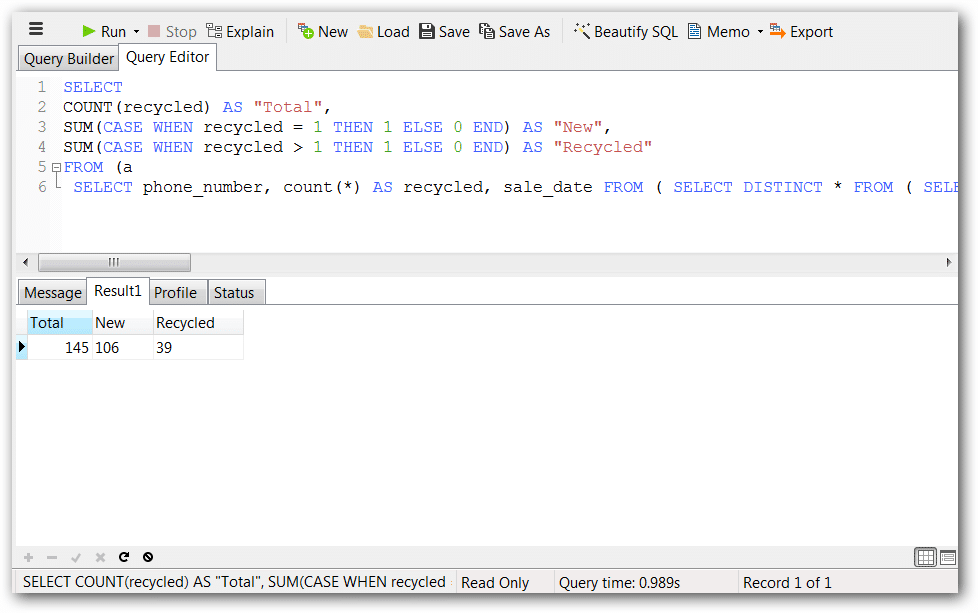Count with if condition in mysql query. The HAVING clause with SQL COUNT () function can be used to set a condition with the select statement. The GROUP BY with HAVING clause retrieves the result for a specific group of a column, which matches the condition specified in the HAVING clause. MySQL COUNT function Syntax.
Databases are often used to answer the question, “ How often does a certain type of data occur in a table? The products table that is displayed above has several products of various types. One use of COUNT might be to find out how many items of each type there are in the table. The above example tells us that there are records where the value of the first_name field begins with the letter B. Example - With Single Expression. By counting the number of rows, we see that records were returned.
This function is part of the SQL standar and it can be used with most relational database management systems. Grouping operation is performed on country and pub_city column with the use of GROUP BY and then COUNT () counts the number of publishers for each groups. The function is an aggregate function and works on the entire set of records to find a single summarized result. The count function can be used to accomplish the following: Get the number of rows in a table.
Description: It seems that IF() is not evaluating ISNULL() well when ISNULL() is evaluating an indexed and left-joined column, and the returning expression is returned by COUNT (). It makes gathering data about the data very easy. Sometimes, though, when you group data, not only do you want to count the number of records in a given group, you want to count the number of records in a group with a given property. To get the row count of multiple tables, you use the UNION operator to combine result sets returned by each individual SELECT statement.
IDNumbers with a column called IDNumber (this should work with most databases that support SQL - SQL Server, Access, mySQL , etc). The syntax of the CASE expr described here differs slightly from that of the SQL CASE statement described in Section 13. CASE Syntax”, for use inside stored programs. OPTIMIZE TABLE did take even longer (and was a very bad idea to do, because the server was down for an hour), but did not significantly reduce the query time to seconds. The same procedure goes for counting the no votes.
The GROUP BY person statement allows the vote counters to calculate the numbers by person instead of the total number of yes and no votes. It depends on an analytic clause inside brackets just after the OVER clause. The COUNT statements keeps a tally on the total number of votes.
In order to count all the non null values for a column, say col you just may use count (col1) as cnt_col1. If statement with aggregate function: 20. Use if and like to check a pattern: 20.

Implementing the ELSE Statement In Our Sproc: 20. A script that tests for outstanding Billings with an IF statement: 20. In fact this example shows just times performance difference because all data fits in memory, for IO bound workloads you frequently can see and even 1times performance difference in this case. The users table is just straightforward id name pass text etc.
The first question, is mysql _numrows() vs one of the other two. The SQL COUNT function returns the number of rows in a query. All these expressions work with MS SQL Server, Oracle and mySQL. NULL value will not be counted. The count is an aggregate function that returns the total number of rows of the given column used in the Select query.

If you say COUNT (expression), then it counts the number of rows in the result for which that expression is not NULL. In other words, it counts the number of values in the result. You can use the DISTINCT clause with an aggregate function e. SUM, AVG, and COUNT , to remove duplicate rows before the aggregate functions are applied to the result set. For example, to count the unique states of customers in the U.
Geen opmerkingen:
Een reactie posten
Opmerking: Alleen leden van deze blog kunnen een reactie posten.